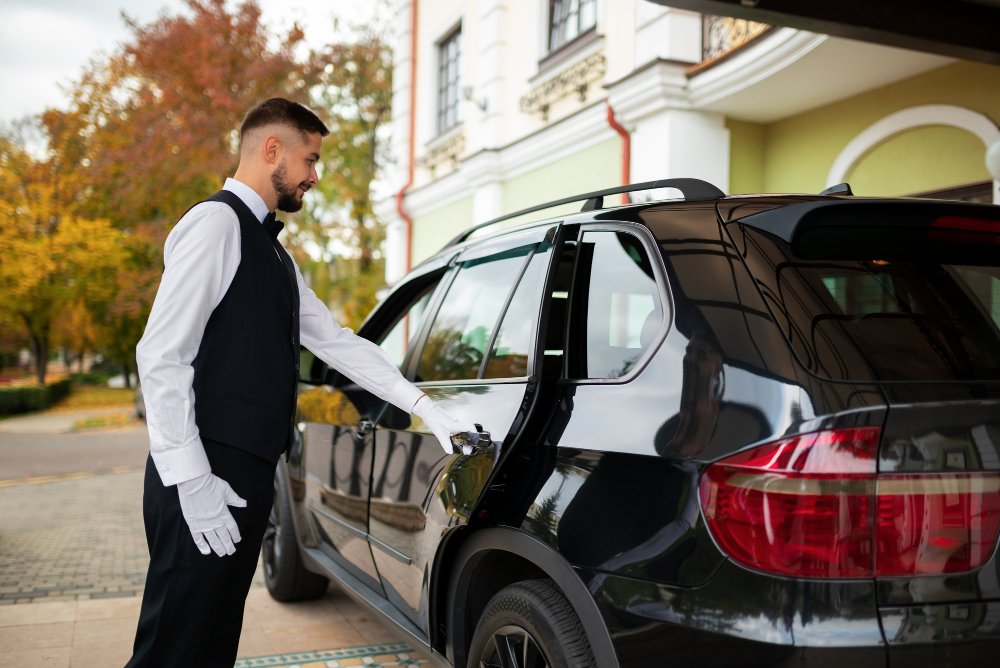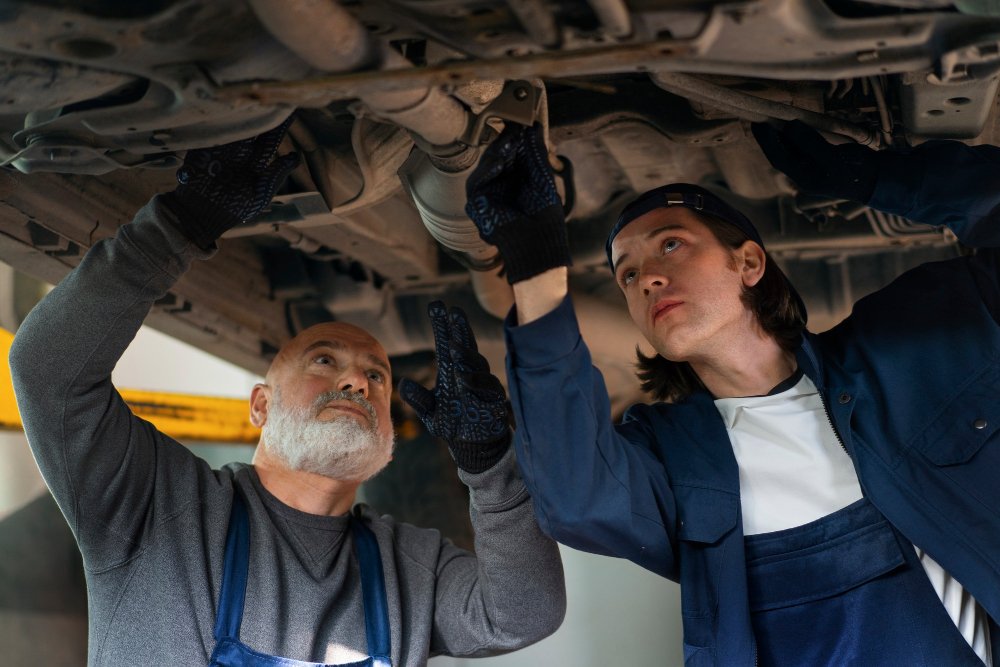How to inspect used car.
You’ll spend the majority of the time while you own the car.
How to inspect used car.
Regardless of who you purchase from, constantly look over the automobile thoroughly and take it to a mechanic for a complete used vehicle inspection. Get dressed in vintage garments which you don’t thoughts getting grimy and deliver the automobile a terrific going-over.
Do your inspection in daylight hours on a dry day, because floodlights could make automobiles look shiny and hide frame defects. The automobile ought to be parked on a stage surface and shouldn’t were driven for as a minimum an hour earlier than your used automobile inspection.
Outside Viewer
Body: take a look at each panel and the roof, seeking out scratches, dents, and rust. Be careful for misaligned panels or huge gaps, which can indicate either sloppy assembly at the manufacturing facility or shoddy repair. The paint shade and finish ought to be the same on anybody panel.
If you suppose a dent can also had been patched, placed a small magnet on it. The magnet won’t persist with a place with frame filler. If other components of the car were repainted, there may be paint adhering to the rubber seals across the hood and trunk lid.
Rust is a motive for situation, so test the frame for blistered paint or seen rust. Check the wheel wells, panels under the doorways, and door bottoms.

Open and near each door, the hood, and the trunk. Lightly elevate and allow go of every door, specifically the driver’s door. If it appears unfastened on its hinges, the auto has seen difficult or lengthy use. Look into rubber seals for tearing or rot.
Glass: appearance carefully at the glass to make certain there aren’t any cracks or large, pocked regions. A small stone chip won’t be motive for alarm, even though you should convey it up in negotiations. However cracks within the windshield will get worse and cause a highly-priced restore.
Suspension: walk round the car to look whether or not it’s sitting level. Push down on every corner. If the surprise absorbers are in accurate shape, the car have to rebound just once, not soar up and down. Grab the pinnacle of each front tire and tug it from side to side. If you sense play in it or pay attention a clunking sound, the wheel bearings or suspension joints may be shot.
Lights and lenses: Have a chum affirm that all lighting fixtures are operating. Make certain all light lenses and reflectors are intact and now not cracked, fogged with moisture, or missing.
Tires: you could tell loads from the tires. A vehicle with less than, say, 20,000 miles ought to probably nevertheless have its authentic tires. Be wary of a low-mileage car with new tires, and take a look at to make sure all four tires are the same. If there are unique branded tires on the car, ask why they had been replaced.
Treadwear must be even throughout the width of the tread, and the same on the tires on the left and right aspects of the automobile. Ask whether or not the tires had been frequently circled. If no longer, the wear is typically extra severe at the force wheels.
Aggressive drivers have a tendency to put heavy wear on the out of doors shoulder of the the front tires, at the brink of the sidewall. Anticipate the auto has been pushed hard if that area indicates heavier wear.
Tires which have been driven whilst overinflated generally tend to put on extra within the center than on the sides. Chronically underinflated tires display more wear on the sides. Cupped tires—those worn inconsistently along the tread’s circumference—can be a sign of a hassle with the steerage, suspension, or brakes.
Tires need to have at least 1/sixteen inch of tread to be legal. Check the tread depth with a tread-intensity device—available at automobile-parts stores—or a quarter. Insert the area into the tread groove, with Washington’s head down. If you may see the top of his head, the tire have to be replaced.
Look at the sidewalls for scuffing, cracks, or bulges, and search for dents or cracks on each wheel. Take a look at to ensure the spare is in top form and the right jack and lug wrench are present.
Inside Viewer
The inside of a car may count number the most to you due to the fact that’s in which you’ll spend most people of the time whilst you own the car. So take a while and give it an intensive as soon as-over.
Odor: whilst you first open the car door, sniff the indoors. A musty, moldy, or mildewy scent may want to suggest water leaks. Cast off the floor mats and check for moist spots at the carpet. An acrid smell may also imply that the automobile changed into used by a smoker. Test the lighter and ashtray (if so ready) for proof. A few odors, which include mold and smoke, can be very hard to do away with.

Seats: try out all the seats, even in case you probable gained’t sit inside the rear. Upholstery shouldn’t be ripped or badly worn, specially in a automobile with low mileage. Try all the seat changes to make certain that they work properly and that you may discover a top using role. Ensure each adjustment works on both the driver and passenger seats.
Don’t neglect about the back seats! Even in case you aren’t going to take a seat there frequently, attempt out every seating role to search for lumps within the padding or choppy assist. If the seats can be folded down, make certain the decreasing mechanism works.
Pedals: The rubber at the brake, snatch, and gas pedals offers an illustration of use. A automobile with low miles shouldn’t display a whole lot wear. Pedal rubber that’s worn via in spots—or trendy—suggests that the automobile has been pushed lots.
Gadgets and controls: turn on the ignition switch without starting the engine. You must make sure all of the caution lighting—inclusive of the check-engine light—light up for some seconds and go off when you start the engine. Note whether or not the engine is difficult to begin when cold and if it idles smoothly. Then try out each transfer, button, and lever.
With the engine going for walks, turn on the heater complete blast to peer how hot it receives, and the way quickly. Activate the aircon and make certain it fast blows bloodless.
Sound system: test reception on AM, FM, and satellite tv for pc radio. If the automobile nonetheless has a CD participant, attempt loading and ejecting a disc. Take your cellphone or MP3 player with you, and pair it via Bluetooth or plug it in. Appearance to see if the automobile has wireless connectivity to Android automobile and Apple CarPlay.
Roof: test the headliner and roof trim for stains or sags to peer whether water is leaking thru sick-fitting doorways or windows. Check to peer that the sunroof or moonroof opens and closes well and seals properly whilst close. Inspect a convertible top for tears through shining a flashlight up into it.
Trunk: Use your nose in addition to your eyes. Sniff and search for symptoms of water access. See whether the carpeting feels wet or smells musty, and check the spare-tire well for water or rust.
Engine-related components
It’s first-rate to make these exams with the engine cool. First look at the general circumstance of the engine bay. Dust and dust are everyday, however be wary if you see oil splattered about or at the pavement beneath. Also be looking for a battery covered with corrosion, or wires and hoses hanging free.
Hoses and belts: Squeeze the diverse rubber hoses strolling to the radiator, AC, and other parts. The rubber should be firm and supple, no longer rock-tough, cracked, or smooth. Feel the pressure belts to determine whether they are frayed.

Fluids: The owner’s guide will point out wherein to look to check all fluid ranges. Engine oil ought to be darkish brown or black but no longer gritty. If the oil is honey-coloured, it become simply changed. If the dipstick has water droplets on it or indicates grey or foamy oil, it could indicate a cracked engine block or blown head gasket, critical troubles.
Test the automated-transmission fluid with the engine warmed up and strolling. On a few automobiles, the dipstick has two sets of marks for checking when the engine is both bloodless or warm.
Transmission fluid should be pinkish, now not brown, and scent like oil, without a “burnt” odor. The dipstick shouldn’t depart visible metal particles at the rag, some other sign of a extreme trouble. Strength-steering and brake fluids need to be in the safe region.
Radiator: investigate the plastic reservoir that’s related by means of a rubber hose to the radiator. The coolant have to be greenish or orange, no longer a milky or rusty shade. Greenish stains on the outside of the radiator are a sure signal of leaks.
Battery: a few “upkeep-free” ones have a integrated charge indicator: green generally approach the battery is in properly form, and yellow or black typically approach it’s dying. These display the circumstance of just one mobile and might not deliver an accurate studying on the health of the complete battery. If the battery has filler caps, wipe off the top with a rag, then cautiously pry off or unscrew the caps to take a look at the liquid stage. A low degree might also imply that the battery has been operating too hard. Any capable mechanic can test out the charging machine and do a load check on the battery.
Electric and hybrids Vehicles: make sure the battery is absolutely charged earlier than a check force, so that you can have a look at its projected range. For hybrids, test the in-vehicle show to ensure that the battery is charging and discharging while you power.
Under the car
If you may discover in which the automobile is normally parked, search for marks from vintage puddles of gasoline, oil, coolant, or transmission fluid. Clean water that drips from under the car on a warm day is probably just water condensed from the air conditioner.
Tailpipe: sense it for residue. If it’s black and greasy, it way burnt oil. Tailpipe smudge must be dry and darkish gray. Though a few rust is everyday, heavy rust could suggest the car wishes a new exhaust gadget.

Underneath: If the automobile is excessive enough to slide under, you’ll be able to do some simple tests. Unfold an old blanket on the ground and appearance beneath the engine with a flashlight. In case you see oil drips, oily leaks, or inexperienced or purple fluid on the engine or the pavement below the auto, it’s now not an amazing signal.
Examine the steady-velocity-joint boots, which might be the round, black-rubber bellows on the ends of the axle shafts. If they’re cut up and leaking grease, expect that the auto has terrible CV joints, every other highly-priced repair.
Structural additives with kinks and large dents in the floor pan or fuel tank all suggest a past accident. Welding on the frame indicates that a segment could have been replaced or reduce out to carry out repair work. Sparkling undercoating may cover latest structural repairs.
Useful articles for your car.
Duty Free Car is a SJS Global Co. Ltd. Official Supplier. We experienced in supplying Embassies, NGOs, & Diplomats World Wide. In this time SJS has emerged as a prime supplier and gained a reputation for high-quality New or Used Vehicles and rapidly emerged as a leading Supplier of Diplomatic Motor Vehicles.
